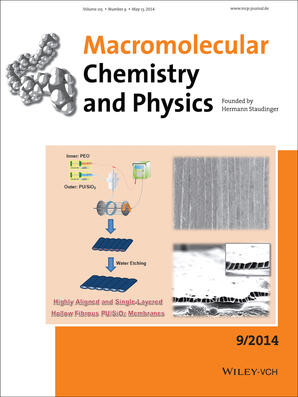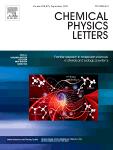Chemistry
Related Works
Content type
Digital Document
Abstract
This thesis describes a novel method to generate trifluoromethanesulfenyl arene or heteroarene products via Ni-catalyzed ortho-selective C-X (X = Cl or Br) activation. Successful C-X activation requires directing groups, but it is highly selective and allows aryl chlorides to be used and shows an appreciable substrate scope. The protocol tolerates various nitrogen-containing directing groups including imines, pyridines, pyrimidines, amides and oxazolines. The method is also compatible with aryl halides bearing substituents with a wide rage of electronic properties, including electron-donating or withdrawing abilities, as well as potentially sensitive functional groups. It also produces trifluoromethylthiolated arenes in good-to-excellent yields at ambient temperatures. [formula omitted]
Origin Information
Content type
Digital Document
Abstract
It is important that all workers understand the health and safety risks of their work environment. It has been demonstrated that exposure to nanoparticles can lead to potential health concerns. A 1 mL nanoparticle solution spill can contain >10^9 nanoparticles, with the particles invisible to the human eye. This nanoparticle spill can cause further contamination in the work environment as workers transfer the particles from one area to another if the nanoparticles are not properly remediated. Therefore, it is essential that effective methods be developed for early identification and clean-up of such spills to avoid potential hazards to those working with these particles. One goal of this research is to develop a methodology that is simple to implement on a global scale to rapidly detect the presence of nanoparticles in different workplace environments to accompany methods for the remediation of spills containing nanoparticles. X-ray fluorescence spectroscopy was identified as a portable solution to potentially identify the presence of and the extent of a spill containing nanoparticles. Many other techniques could also be utilized, but the ease of use at the point of contamination without the requirement of sample preparation makes this an attractive solution in nanoparticle remediation. Another goal of this research is to develop an efficient, effective and inexpensive means to remediate spills containing nanoparticle contaminants. The implementation of these remediation procedures would change how nanoparticles are treated in the workplace and promote a healthy work environment when using materials that would otherwise go unnoticed due to their small size. Remediation of nanoparticles spilled in the workplace requires a method of acknowledging that these unseen particles are appropriately being removed and to avoid spreading these particles to a wider extent throughout the workplace. Analytical techniques were used to monitor the presence of nanoparticle contaminants and, in combination with techniques to encapsulate nanomaterials within a spill, were used to assess the appropriateness of these remediation techniques for cleaning up simulated spills. These studies demonstrate a series of methods to progressively remove nanoparticle contamination from countertops in the workplace.
Origin Information
Content type
Digital Document
Abstract
A series of zirconium complexes supported by the chelating diamido ligand (C6F5NHCH2CH20CH2)2(H2(NOON)) have been prepared. These complexes include (NOON)Zr(CH2Ph)2, (NOON)ZrMe2, (NOON)ZrC12, and (NOON)ZrC1[N(SiMe3)2]. (NOON)ZrMe2 and (NOON)ZrC1[N(SiMe3)2] were crystallographically characterized and for all the complexes, the ligand NMR spectra were consistent with a fluxional process occurring in solution. When (NOON)Zr(CH2Ph)2was exposed to 435 nm light, a photochemical reaction occurred which resulted in C-F bond activation and the formation of (NOON)ZrF2and a metallated dimer. When (NOON)ZrC12was treated with MAO, it showed modest activity as an ethylene polymerization catalyst.
A series of zirconium complexes supported by l , 4 , 8 , l l - tetraazabicyclo[6.6.2]hexadecane (H2(CBC)) have been prepared and characterized.
( C B C > Z ~ ( C H ~ P ~ ) N ( B U ' ) C ( H ) = C ( HC PB ~C , ) Z r ( O - 2 , 6 - C 6 H 3 M e 2 ) 2 , ( c B c ) z ~ ( o s ~ ( B u ' ) ~ H ) ~ , (CBC)Zr(CH2SiMe3)2, (CBC)ZrC4Ph4 were crystallographically characterized and (cBc)z~(cH~P~)(o-2,6-c~H~Bu'~), (CBC)Z~[K~(C,O)-OC~H~(~-RU')(~-CM~~CH~)] (CBC)ZrC12, (CBC)ZrC1[N(SiMe3)2] and (CBC)ZrMe2 were fully characterized.
Treatment of (CBC)ZrMe2 with MA0 does not result in an active ethylene
polymerization catalyst. The metallacycle (CBC)ZrC4Ph4reacts with thionyl chloride and dichlorophenylphosphine to yield tetraphenylthiophene oxide and pentaphenylphosphole
respectively.
Treatment of Yb[N(SiMe3)2]2(0Et2)2with H2(CBC) results in the sparingly soluble coordination polymer [(CBC)Yb], and two byproducts of this reaction were crystallographically characterized. One was the mixed valence salt { [ ( ~ - c B c ) Y ~ ] ~ ( ~ ~ - o))'{Y~[N(s~M~~)~w]~h}il-e,the other was { [ ( p - ~ ~ ~ ) ~ b-]o3)}(+pI-.3In both cases the
cation is a trimer of ytterbium (111) ions bridged by an oxygen and three amido nitrogens
from the (CBC) ligand.
Origin Information
Content type
Digital Document
Abstract
Titanium dioxide nanoparticles (NPs) and iridium(III) complexes have been prepared and studied as photocatalysts towards enhanced efficiency and mechanistic understanding of photocatalysis. Core-shell palladium-titanium dioxide NPs, Pd@TiO₂, were prepared using monodisperse Pd@SiO₂ core-shell NPs as a template. The Pd cores and porous, high surface area TiO₂ shells are expected to prevent Pd loss and increase surface-substrate interactions, respectively, thereby improving photocatalytic efficiency. Carbon dioxide was photocatalytically reduced in water by the Pd@TiO₂ NPs with methane being the major product. Iridium(III) complexes were tailored to increase the excited state lifetime through minor ligand modification. [Ir(ppy)₂phen]PF₆, [Ir(ppy)₂dtbbpy]PF₆, [Ir(ppy)₂dmbpy]PF₆, and [Ir(ppy)₂bpy]PF₆ were prepared where ppy = 2-phenylpyridine, bpy = 2,2ʹ-bipyridine, dmbpy = 4,4ʹ-dimethyl-2,2ʹ-bipyridine, dtbbpy = 4,4’-di-tert-butyl-2,2ʹ-bipyridine and phen = 1,10-phenanthroline. Their excited state lifetimes range from 0.3 µs to 0.7 µs and correlate to the rate of single-electron transfer (SET) from excited state to substrate, CF₃SO₂Cl (1.9 × 10⁸ M‾¹ s‾¹ to 9.3 × 10⁸ M‾¹ s‾¹), but the rate of final product formation is unchanged. The photocatalyzed trifluoromethylation of quinoline was used as a prototypical reaction. The unchanged rate of product formation indicates that SET involving the excited state is not rate-limiting in this system. Further increase in the SET rate was attempted by attaching pyrene onto a ligand in the complex for Reversible Electron Energy Transfer (REET) to increase the photocatalyst excited state lifetime more significantly. [Ir(npy)₂bpyethylpyr]PF₆, [Ir(npy)₂bpypyr]PF₆, and [Ir(npy)₂dmbpy]PF₆ were prepared where npy = 2-(naphthalen-1-yl)pyridine, dmbpy = 4,4ʹ-dimethyl-2,2ʹ-bipyridine, bpyethylpyr = 4-methyl-4ʹ-[2-(pyren-1-yl)ethyl]-2,2ʹ-bipyridine and bpypyr = 4-(1ʹʹ-pyrenyl)-2,2ʹ-bipyridine. The excited state lifetimes are 13.8 µs, 4.8 µs and 3.2 µs, respectively. Excited state lifetime and transient absorption studies indicate that only the complex with pyrene separated from bpy by an alkyl bridge displays REET. The rates of SET and product formation in the trifluoromethylation of quinoline are slower upon incorporation of pyrene. This is attributed to new, less reactive excited states and increased photocatalyst size, which slows down diffusion. The findings presented herein reveal the importance of photophysical and structural properties, such as photocatalyst size and excited state lifetime, in SET and photocatalytic efficiency, thereby contributing to guided optimization of photocatalytic systems.
Origin Information
Content type
Digital Document
Abstract
Silane-based self-assembled monolayers (SAMs) are commonly used as protective coatings against chemical etchants and adhesion of biomolecules. The conventional methods of producing SAMs are very time consuming and energy intensive processes. This thesis presents an efficient technique to produce silane-based SAMs approximately 300 times faster while consuming over 750 times less energy than the conventional method. Silane-based SAMs produce monolayers containing various types of defects. New techniques are developed to identify defects in SAMs and to correct for them. Chemical amplification of defects is developed for easily detecting defects in SAMs by traditional microscopy and spectroscopy techniques. Extraction and refilling methods are used to increase the packing density of the molecules in these monolayers and reduce the number of defects present in SAMs. By increasing the efficiency of silane deposition and improving the packing density of molecules, high quality SAMs can be produced within a short period of time.
Origin Information
Content type
Digital Document
Abstract
One advantage of conjugated polymers as organic materials is that their properties may be readily tuned through covalent modifications. This thesis presents studies on the structure- property relationships resulting from single- and double-atom substitutions on an alternating donor-acceptor conjugated polymer. Specifically, single selenium and tellurium atoms have been incorporated into the acceptor monomer in place of sulfur; silicon and germanium atoms have been substituted in place of carbon at the donor monomer bridge position. The carbon-donor/tellurium-acceptor polymer was synthesized by a post-polymerization reaction sequence and demonstrated the utility of heavy group 16 atoms to red shift a polymer absorption spectrum. Density functional theory calculations point to a new explanation for this result invoking the lower heavy atom ionization energy and reduced aromaticity of acceptor monomers containing selenium and tellurium compared to sulfur. Absorption and emission experiments demonstrate that both silicon and germanium substitutions in the donor slightly blue shift the polymer absorption spectrum. Polymers containing sulfur in the acceptor are the strongest light absorbers of all polymers studied here. Molecular weight and phenyl end capping studies show that molecular weight appears to affect polymer absorption to the greatest degree in a medium molecular weight regime and that these effects have a significant aggregation component. Solarcell devices containing either the silicon- or germanium-donor/selenium-acceptor polymer display improved red light harvesting or hole mobility relative to their structural analogues. Overall, these results clarify the effects of single atom substitution on donor-acceptor polymers and aid in the future design of polymers containing heavy atoms.
Origin Information
Content type
Digital Document
Abstract
Heavy‐atom substitution chemistry in donor–acceptor (D–A) conjugated polymers has gained increasing attention in the past few years. Overall, the introduction of “heavy” atoms (below C in group 14; below N in group 15; below S in group 16) into D–A conjugated polymers allows control over properties through relatively straightforward synthetic chemistry, and produces materials with high molecular weights (>20 000 g mol−1), strong absorption (ε ≈ 40 000 L mol−1 cm−1), narrow highest occupied molecular orbital (HOMO)–lowest unoccupied molecular orbital (LUMO) gaps (<1 eV), as well as high charge‐carrier mobility (>10−2 cm2 V−1 s−1). This Trend article aims to describe heavy‐atom substitution effects in D–A polymers, and their applications, by systematically examining representative polymer structures.
Origin Information
Content type
Digital Document
Abstract
Controlling the phase-separation behavior and achieving an ideal morphology has turned into one of the most important challenges in the field of polymer electronics. In this study we report a straightforward route to ‘blocky’ copolymers that incorporates selenophene into a benzodithiophene (BDT)–thienothiophene (TT) donor–acceptor system for improved molecular ordering. The blocky structure preserves the optical properties of the parent polymers, which is different than an analogue employing purely statistical sequence. Peak force quantitative nanomechanical mode atomic force microscopy reveals a more ordered network-like morphology in blocky polymer:PC71BM films. However the photovoltaic properties of blocky polymers are still lower than the physical mixtures of the two parent polymers. This blocky copolymer approach can be applied to many other polymerization methods to prepare many new types of blocky D–A polymers. As such, it could be a new tool for tuning the polymer crystallinity, and eventually achieving controllable solid-state morphology for polymer electronic applications.
Origin Information
Content type
Digital Document
Abstract
We have synthesized a series of cyclopentadithiophene–benzochalcogenodiazole donor–acceptor (D–A) copolymers, wherein a single atom in the benzochalcogenodiazole unit is varied from sulfur to selenium to tellurium, which allows us to explicitly study sulfur to selenium to tellurium substitution in D–A copolymers for the first time. The synthesis of S- and Se-containing polymers is straightforward; however, Te-containing polymers must be prepared by postpolymerization single atom substitution. All of the polymers have the representative dual-band optical absorption profile, consisting of both a low- and high-energy optical transition. Optical spectroscopy reveals that heavy atom substitution leads to a red-shift in the low-energy transition, while the high-energy band remains relatively constant in energy. The red-shift in the low-energy transition leads to optical band gap values of 1.59, 1.46, and 1.06 eV for the S-, Se-, and Te-containing polymers, respectively. Additionally, the strength of the low-energy band decreases, while the high-energy band remains constant. These trends cannot be explained by the present D and A theory where optical properties are governed exclusively by the strength of D and A units. A series of optical spectroscopy experiments, solvatochromism studies, density functional theory (DFT) calculations, and time-dependent DFT calculations are used to understand these trends. The red-shift in low-energy absorption is likely due to both a decrease in ionization potential and an increase in bond length and decrease in acceptor aromaticity. The loss of intensity of the low-energy band is likely the result of a loss of electronegativity and the acceptor unit’s ability to separate charge. Overall, in addition to the established theory that difference in electron density of the D and A units controls the band gap, single atom substitution at key positions can be used to control the band gap of D–A copolymers.
Origin Information
Content type
Digital Document
Abstract
13C hyperfine coupling constants of the MuC60 radical have been measured by muon level-crossing spectroscopy, using a dilute solution of 99% enriched 13C60 in decalin. The signs as well as the magnitudes of the hyperfine constants were determined. The results range from 52.6 to −25.4 MHz and support those calculations which predict an extended distribution of unpaired electron spin density in radical adducts of fullerenes. The hyperfine constants are consistent with published electron spin resonance results for (CD3)3CC60, but contradict a recent report for HC60, where a considerably smaller value is reported for the largest splitting. [ABSTRACT FROM AUTHOR]
Origin Information




